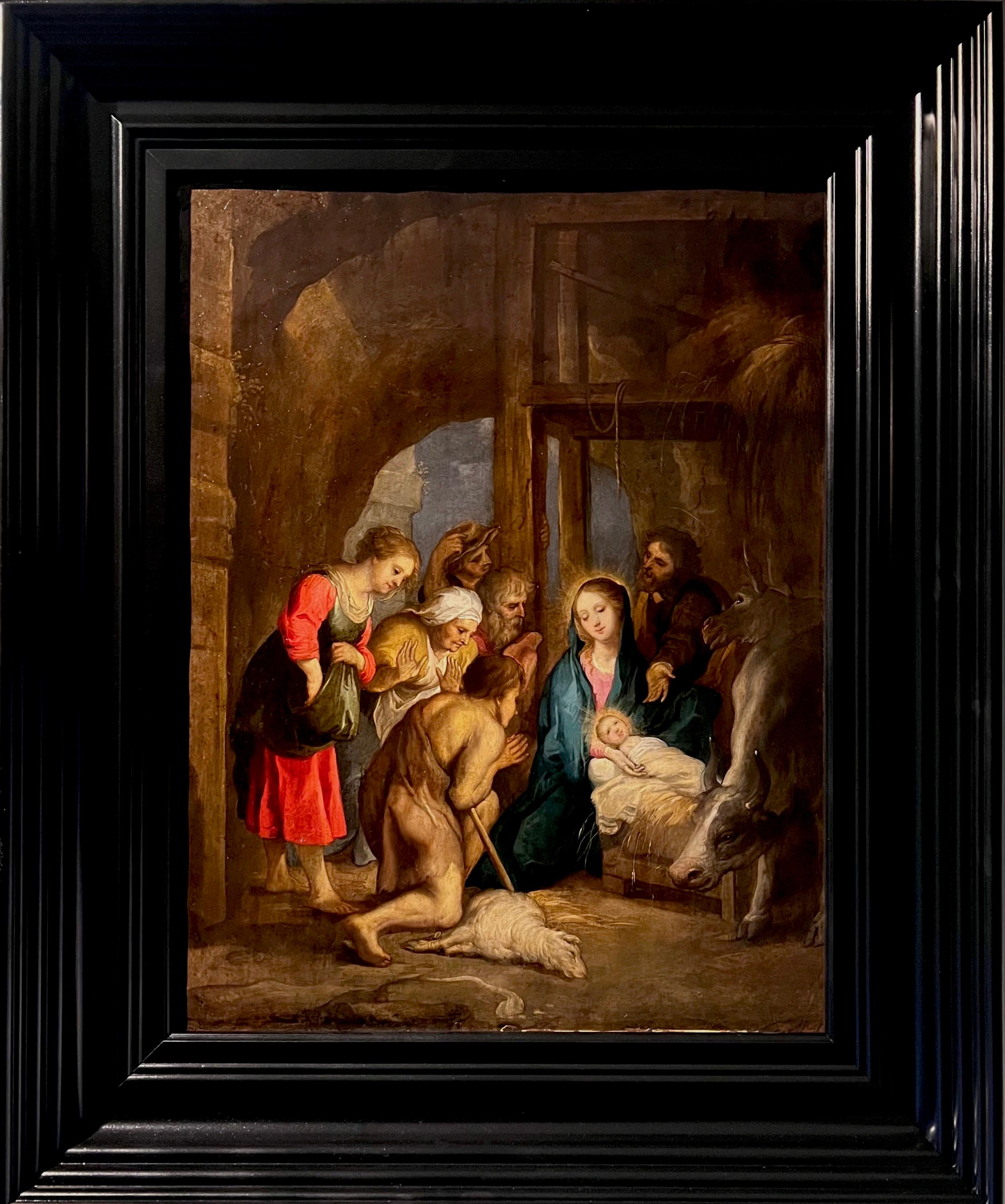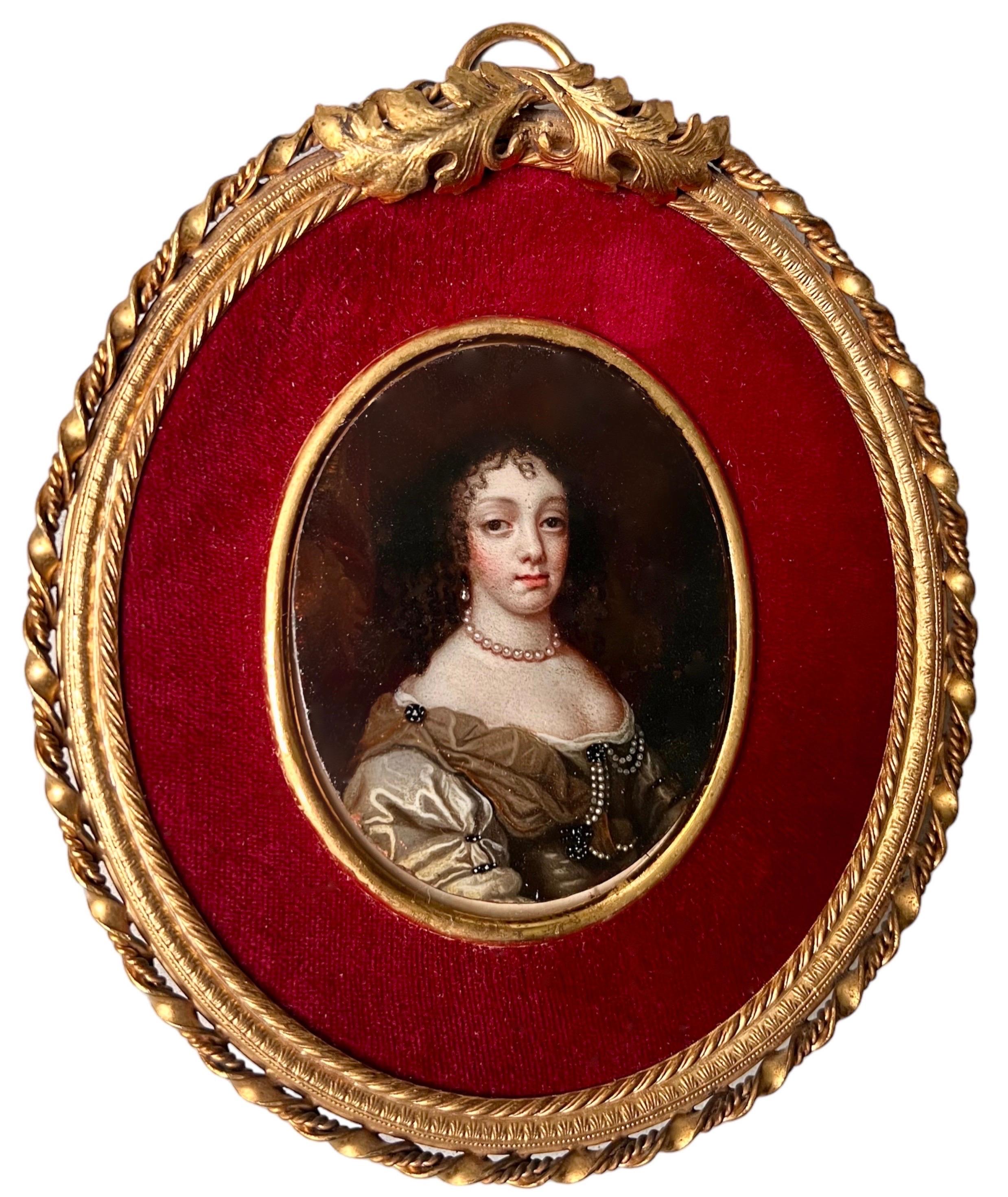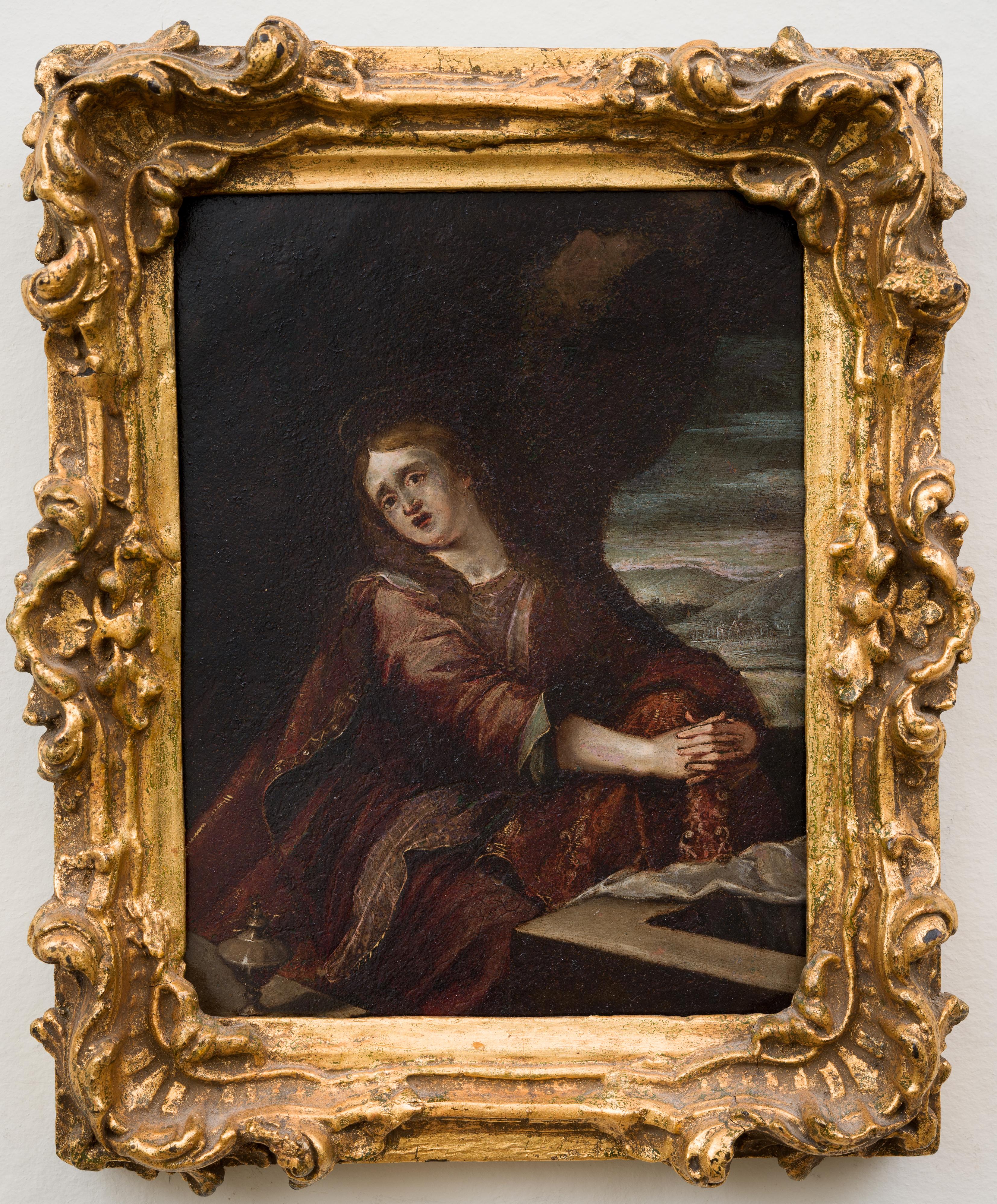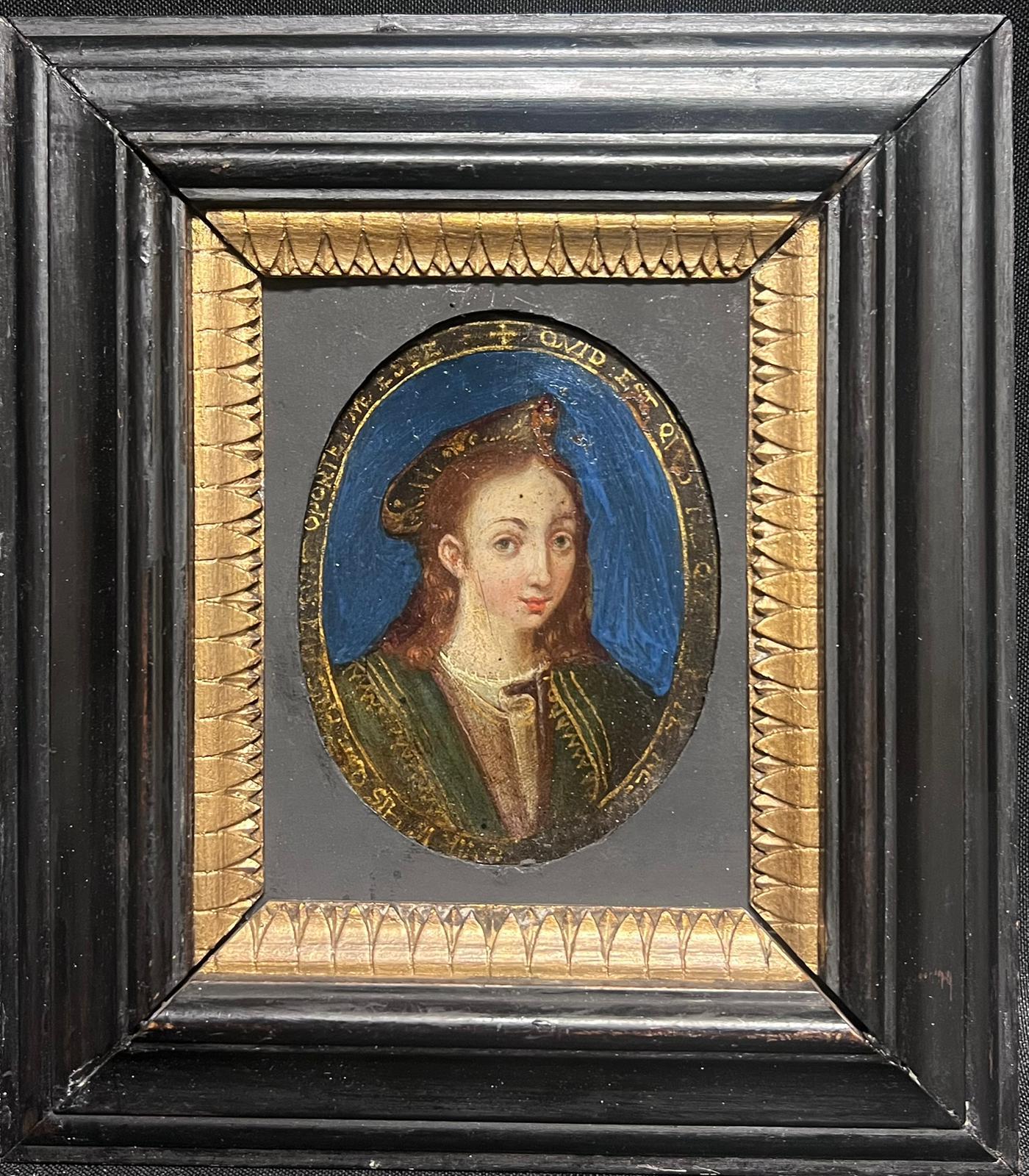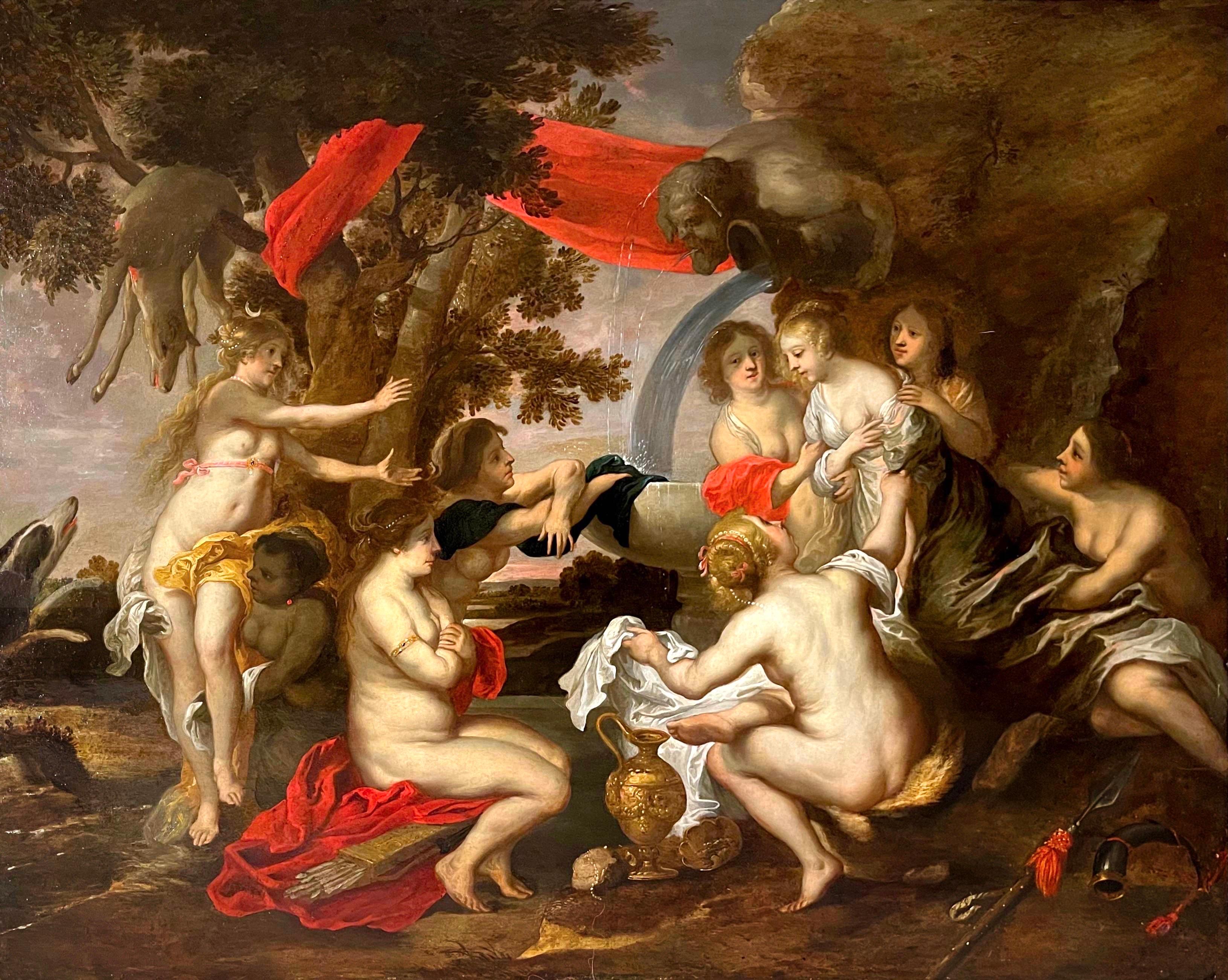Items Similar to St Paul With Sword and Book, Mannerist School, Oil on Copper
Video Loading
Want more images or videos?
Request additional images or videos from the seller
1 of 6
UnknownSt Paul With Sword and Book, Mannerist School, Oil on Copper1600s
1600s
About the Item
Mannerism, derived from the Italian term "maneria," which simply means "style," was an artistic movement that emerged in the later years of the Italian High Renaissance, around 1520, and extended into the early 17th century. It is often referred to as the "stylish style" due to its emphasis on self-conscious artifice rather than realistic depiction. Historians debate whether Mannerism should be classified as a style, a movement, or a period.
In contrast to the harmonious ideals embraced by renowned artists such as Raphael, Michelangelo, and Leonardo da Vinci, Mannerist painters took a step further and created compositions that were almost bizarre. They introduced fresh color schemes, elongated proportions, and exaggerated anatomy of figures, portraying them in convoluted and serpentine poses. These artists skillfully exhibited their techniques and abilities, aiming to evoke a sense of sophisticated elegance.
Among the notable Mannerist painters are Jacopo da Pontormo, Bronzino, Lavinia Fontana, and Joachim Wtewael. In our painting "St Paul With Sword and Book," we can observe the artist's adherence to the Mannerist style through elements such as the vivid colors of the clothing, the hand gestures, and the meticulously painted face.
oil on copper
plate size 6.29 x 5.11 inches (16 x 13cm)
frame 10.62 x 9.05 inches (27 x 23 cm)
Provenance:
From a Swedish Private Collection.
- Creation Year:1600s
- Dimensions:Height: 10.63 in (27 cm)Width: 9.06 in (23 cm)
- Medium:
- Movement & Style:
- Period:
- Condition:Restored 2021. : Very good condition, small retouches. Bright and beautiful colours. The oak frame is made by Swedish frame maker Christer Björkman 2021.
- Gallery Location:Stockholm, SE
- Reference Number:1stDibs: LU144528970122
About the Seller
5.0
Platinum Seller
These expertly vetted sellers are 1stDibs' most experienced sellers and are rated highest by our customers.
Established in 2020
1stDibs seller since 2020
112 sales on 1stDibs
Typical response time: <1 hour
Associations
International Confederation of Art and Antique Dealers' Associations
- ShippingRetrieving quote...Ships From: Stockholm, Sweden
- Return PolicyA return for this item may be initiated within 3 days of delivery.
More From This SellerView All
- Flemish School, 17th Century, Mary MagdaleneLocated in Stockholm, SEFlemish School, 17th Century Mary Magdalene oil on copper 17th century plate dimensions 23 x 17 cm frame 27 x 22 cm Restored by professional art conservator 2022. Provenance: ...Category
17th Century Old Masters Figurative Paintings
MaterialsCopper
- The Card Players by a Flemish 1600s ArtistBy Flemish School, 17th CenturyLocated in Stockholm, SEFlemish 1600s School The Card Players oil on oak panel panel dimensions 22.5 x 20 cm frame included Provenance: From a Swedish private collection. Condition: Flat and stabl...Category
17th Century Old Masters Figurative Paintings
MaterialsOak, Oil, Panel
- Portrait of a Young Boy With Hat, Possibly Painted by Gustaf BrandeliusLocated in Stockholm, SEUnknown Artist, Possibly Gustaf Brandelius (1833-1884) Portrait of a Young Boy With Hat oil on tree panel painted c.1850-70 panel 9.05 x 5.90 inches ...Category
1860s Portrait Paintings
MaterialsOil, Wood Panel
- Oil Sketch for the Painting "Gustavus II Adolphus before the Battle of Lützen"Located in Stockholm, SEThis is an oil sketch for the famous painting "Gustavus II Adolphus before the Battle of Lützen" today in the Göteborgs Konstmuseum's collection. There is something special with an ...Category
1890s Portrait Paintings
MaterialsCanvas, Oil
- Cubist Portrait of Gabriele Varese (in Italian uniform), 1919Located in Stockholm, SEDick Beer (b. London 1893 - d. Stockholm 1938) Portrait of Gabriele Varese (in Italian uniform), 1919 oil on canvas mounted on panel 116 x 90 cm stamp signature Exhibited: Solo exhibition, Stockholm, Nov-Dec 1917; The Royal Academy Stockholm 1973; Åmells Konsthandel – En internationell kubist, Stockholm & London 2008 Hälsinglands Museum 2011 Millesgården – Dick Beer – Impressionist & Kubist, 2012 Provenance: Within the family Beer until today Dick Beer was born in 1893 in London as Richard Beer, the youngest of five brothers. His father, John Beer (1853-1906), was a watercolourist who was born in Stockholm and had left Sweden at the age of 17. John Beer instructed his sons in drawing and painting, among other things. A number of sketchbooks bear testimony to the boys’ talent. Dick Beer’s parents died in 1906 and 1907. Barely 15 years old, Beer arrived in Sweden as an orphan. First he lived with relatives and finally he ended up at Reverend Laurell in Västergötland. Dick Beer began his artistic studies at the Althin School of Painting in Stockholm in 1908 and continued at the Royal Academy of Arts in the autumn of 1910, but in September 1912 he broke off his studies and travelled to Paris. He rented a studio and enrolled at the Colarossi and Grande Chaumière academies. In the summer of 1913, Dick Beer travelled to Pont-Aven in Bretagne in order to paint. In September the same year, he held his first solo exhibition in Stockholm which he gave the French title Exposition des tableaux de Bretagne et autour de Paris. The exhibition proved a success. Many of the paintings were executed in a light palette in a style inspired by the impressionists. In 1914, Dick Beer undertook an extensive study trip to Italy, Tunis, Morocco and Spain, which resulted in canvases overflowing with colours and light. When the French army mobilised, he volunteered and was enlisted in the French Foreign Legion. In 1915 Dick Beer sustained severe head injuries in a grenade attack, which resulted in deafness and a nervous condition that would plague him for the rest of his life. Two of his brothers died the following year, fighting for the English army. Dick Beer was hospitalised and convalesced at Château de Rochefort. Here he started painting again, in an impressionist style, a painting dominated by blue and green hues. In 1918, Dick Beer married Ruth Öhrling, a dentist, and their son John was born later in the year. During this time, Beer began experimenting with cubist painting and created several large compositions, including the painting “The Arab Café”. In the years that followed, Dick Beer was based in Paris, where he often moved house. He was instructed by André Lhote, who encouraged his students to work freely in the studio and provided them with individual critique. Beer often travelled to Bretagne or Provence. His artist friends came from all over Europe and included Amedeo Modigliani. Dick Beer exhibited fairly regularly in Paris between 1919 and 1934 and made a name for himself in French artist circles. In the summers, Ruth regularly rented a house in the countryside, often at Lake Mälaren. She kept a large house with many models and friends and there was a lot of painting and discussions. In 1933, the couple divorced but Ruth still loved Dick and continued to support him financially for the rest of his life. Dick Beer also exhibited in Sweden, albeit irregularly due to his failing health. In the 1920s and 1930s, Beer continued to pursue an expressionist painting with intense colours and unexpected perspectives, but eventually he veered towards more naturalistic forms, including a large number of nudes. He also painted several portraits of artists, politicians and writers. In 1938, Dick Beer sojourned in Arles. The budding photographer Christer Strömholm...Category
1910s Cubist Portrait Paintings
MaterialsCanvas, Oil, Panel
- Moments of Reflection Depicting a Woman Sitting by the Fire, Original Oil PaintBy Sam UhrdinLocated in Stockholm, SEWe are pleased to present a captivating painting by the artist Sam Uhrdin (1886-1964). This beautiful artwork depicts a woman from Dalarna, sitting in front of a warm, glowing fire. The entire painting is bathed in a soft, radiant light, particularly illuminating her face and traditional white/red attire. The woman appears contemplative, lost in thought, perhaps thinking of someone dear to her heart. She is depicted in a kitchen, taking a moment to relax after a day's chores in her home. Sam Uhrdin's artistic journey began in the early 1900s, he traveled to Stockholm in 1903 to further continue his studies in painting. He worked as a painter during the day and attended various evening schools in the evenings. In 1906, he journeyed to America to work as a sign painter, but he mainly ended up working as an upholsterer. Returning to Leksand in 1909 via London and Paris, his artistic talent gained recognition, and with the help of some patrons, he began studying at the Royal Academy of Fine Arts in 1911, occasionally attending Althin's painting school in Stockholm. Financial circumstances cut his study time short, and his skill as a portrait painter earned him numerous portrait commissions, which further occupied his time. In 1921, Uhrdin received a scholarship from the Royal Academy, enabling him to embark on a study trip in 1922 to the Netherlands, Belgium, and France, which he had to cut short due to his wife's illness. He later visited places like Spain and Portugal. Uhrdin's breakthrough came with his portrait of the former Prime Minister Nils Edén, which he executed in 1919. In 1921, he portrayed the participants of the Swedish Academy. Among other representatives of official Sweden captured by Uhrdin were Gustav V, Manne Siegbahn, Ludvig Stavenow, and bishops Gottfrid and Einar Billing. In 1932, he held a solo exhibition at Konstnärshuset in Stockholm, and he participated in various exhibitions, including the Swedish Artists' Association in Stockholm in 1917, Swedish Art at Valand-Chalmers in Gothenburg in 1923, Dalarna Artists displayed at Liljevalchs Konsthall in 1936, and the National Museum's traveling exhibition "Barnet i konsten" (Children in Art...Category
1940s Realist Portrait Paintings
MaterialsCanvas, Oil
You May Also Like
- 17th century Flemish old master painting - Adoration of the Shepherds ChristmasLocated in Antwerp, BE17th century Flemish Old master painting "Adoration of the Shepherds" by Victor Wolfvoet the Younger Surrounded by an elegant and broad black frame, i...Category
17th Century Old Masters Figurative Paintings
MaterialsCopper
- 17th century Old Master miniature of Queen Catherine of BraganzaLocated in Antwerp, BEVery fine old master miniature of Queen Catherine of Braganza Catherine of Braganza's life is a compelling mix of heroism and valuable contributions. ...Category
17th Century Old Masters Portrait Paintings
MaterialsCopper
- Fine 17th Century Italian Old Master Oval Portrait of Lady on Copper Wooden FrmLocated in Cirencester, GloucestershirePortrait of a Lady Italian Old Master, 17th century oil on copper, framed framed: 8.75 x 7.75 inches painting: 5 x 4 inches provenance: private collection, England condition: very go...Category
17th Century Old Masters Portrait Paintings
MaterialsCopper
- Large 17th century Flemish old master painting - Diana and Callisto - RubensLocated in Antwerp, BE17th century Flemish Old master painting "Diana and Callisto" attributed to Victor Wolfvoet the Younger Our painting is based on Rubens' great work of...Category
17th Century Old Masters Figurative Paintings
MaterialsCopper
- Annunciation to the Virgin Attributed to Cornelis SCHUTLocated in Pasadena, CAEarly 17th-century copper painting depicting a religious scene, School Annunciation, Oil on Copper attributed to Cornelis SCHUT, painter of Antwerp (159...Category
17th Century Old Masters Figurative Paintings
MaterialsCopper
- 17thC Spanish Colonial School Frame with orig. Painting St. Joseph Jesus ChildBy Spanish Colonial (Peruvian)Located in Meinisberg, CH17th Century Spanish Colonial School (Likely to be School of Cuzco in Peru) - St. Joseph with the Christ Child carrying a basket, housed in its original carved, hardwood frame. • Painted in oil on canvas (laid on to fiberboard), ca.58 x 48 cm • Original frame, ca. 64 x 54 cm • Visible image ca. 52.5 x 42.5 cm Centuries ago this religious painting, depicting St. Joseph with his flowering staff and the Christ Child carrying a basket, was originally displayed in a church or chapel in 17th Century colonial...Category
17th Century Old Masters Figurative Paintings
MaterialsGold Leaf
Recently Viewed
View AllMore Ways To Browse
Antique Copper Art
Antique Book Collections
Antique Book Plate
Antique Book Plates
Old Antique Book
Old Copper
Antique Swords
Swords Antique
Antique Copper Canner
Antique Book Images
Antique Copper Paint
Italian High Renaissance
Antique Copper Old
Antique Copper Collection
Antique Copper Colour
Antique Copper Color
Copper Figure
Antique School Book
